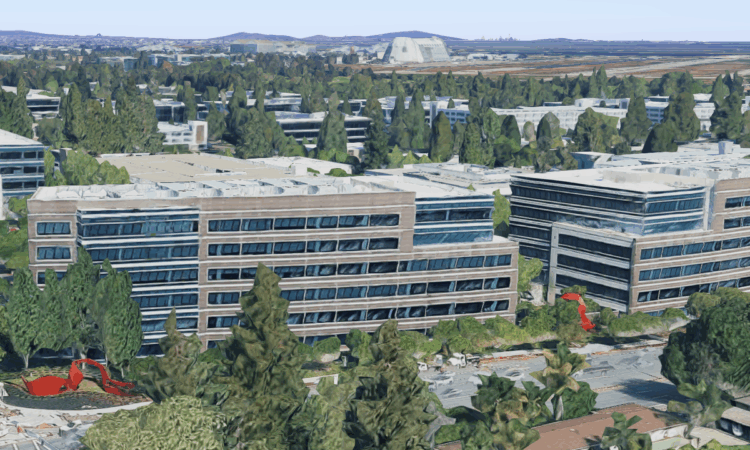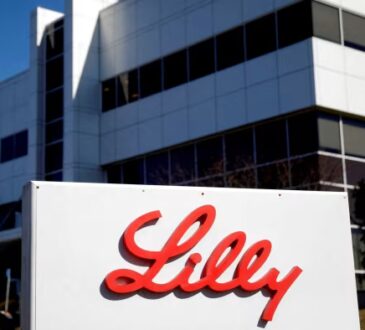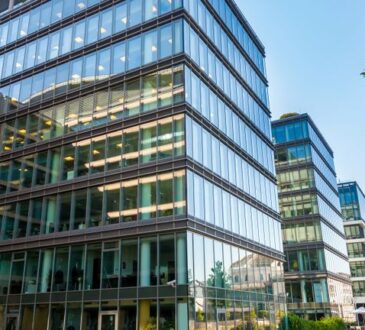Apple, Nvidia Among Tech Companies Buying Bay Area Office In Renewed Investment Push

In Silicon Valley’s biggest real estate plays this year, the boldest buyers are deep-pocketed companies planning to keep the keys.
Tech’s titans are returning to their prepandemic habit of buying property to not just park parts of their vast cash reserves, but to guarantee control of their facilities as the industry shifts amid the explosion of artificial intelligence.
Owner-user deals accounted for 51.5% of transaction volume in the first half of 2025 as firms like Nvidia and LinkedIn snapped up buildings near their headquarters, treating discounted pricing as a once-in-a-cycle chance to lock in their footprint for decades.

Apple purchased an office campus at 505-599 N. Mathilda Ave. and 605 W. Maude Ave. in Sunnyvale, California.
“Pricing is below replacement costs. So, it’s an opportune moment to do it if you have cash available, and many of these tech firms do have cash available to do it,” JLL Senior Director of Northwest Region Research Alexander Quinn said.
This surge in these kinds of acquisitions reflects a broader strategic shift as tech companies seek greater control over their real estate assets. Many are focusing on key research and development hubs like Santa Clara, Sunnyvale and Cupertino to safeguard critical operations while managing costs in the wake of destabilizing tariffs and supply chain instability.
Apple has been perhaps the busiest buyer among its tech peers. The iPhone maker acquired a four-building office campus for $365M in Sunnyvale in July, the company’s third major office deal of the year. This followed the $167M purchase of a three-building campus in Cupertino.
For companies with a strong commitment to getting employees back into the office, owning their space rather than continuing to lease makes sense in the long term, Quinn said.
Office visits reached their highest point since the pandemic in July, with San Francisco showing 21.6% growth year-over-year, according to the latest Placer.ai data.
There are two primary dynamics driving Silicon Valley’s owner-user boom. On one side, major players like Nvidia are in rapid expansion mode, fueled by massive demand. They’re using the current low-cost basis as an opportunity to scoop up real estate as part of their growth strategy.
On the other side, smaller startups, especially in robotics, are also expanding but with a more targeted approach. Many are buying flex research and development space and adopting “two office” setups that split operations between San Francisco and Silicon Valley, balancing access to talent with control over specialized facilities.
“There’s been increased interest in investment in R&D functions and also controlling your assets long-term in the States,” Quinn said. “These are really known as R&D hubs, so it’s no surprise that in this moment where they could buy below replacement costs, they’re doing that.”
Semiconductor companies, in particular, have grown their owned footprint by 11% since 2024, making them one of the most aggressive buyers in the market. Applied Materials’ real estate investments in the valley topped $400M with its acquisition of a Sunnyvale research building for $25M in July.
The company, which supplies the semiconductor industry, plans to invest $4B into the facility. Many of these acquisitions are tied to research and development needs, supply chain resilience and proximity to existing production facilities.

“If they’re also working on hardware operations, then it makes a lot of sense for them to own and operate their facilities,” Quinn said.
That is especially true in the semiconductor industry, where offices often require highly specialized hardware and expensive buildouts.
For many firms, owning instead of leasing offers predictable costs and long-term control, even in an elevated interest rate environment.
“They’re doing this based on the calculus of the opportunity cost of what other investments they can make versus the investment in their real estate,” Quinn said.
Some are using cash reserves to close quickly. In May, Nvidia dropped $123M in an all-cash deal for a 10-building campus near its headquarters in Santa Clara.
The wave of owner-user buying could affect local supply by taking quality space off the leasing market.
“It probably stabilizes the market further over time, because it reduces the total of available leasable supply,” Quinn said.
That could make it harder for other tenants to secure well-located offices or specialized facilities, particularly in high-demand submarkets. Brokers expect owner-user activity to stay strong through the second half of 2025 as companies continue to capitalize on pricing and availability.
San Francisco’s office leasing market is experiencing a rebound. Leasing was up 61% in the first half of the year compared to the same period in 2024. The artificial intelligence boom, combined with major tech companies like Google, Apple and Meta all requiring employees to be in the office three or more days per week, is driving the recovery.
Quinn pointed to two scenarios that could cause an about-face among tech investors.
“If it turns out that profits aren’t what they seem, they say ‘sell, sell, sell, because we’re not making our numbers.’”
That was the case in 2019, when game developer Zynga sold its San Francisco headquarters for $600M in a sale-leaseback agreement to keep the company solvent.
In another scenario, if the long-term returns from the company’s core business outweigh the potential gains from owning property, companies might opt to invest in growth rather than tie up capital in real estate.
But for now, the trend continues apace.
“It’s a good thing for the market, because it shows conviction towards this fixed asset,” Quinn said.




